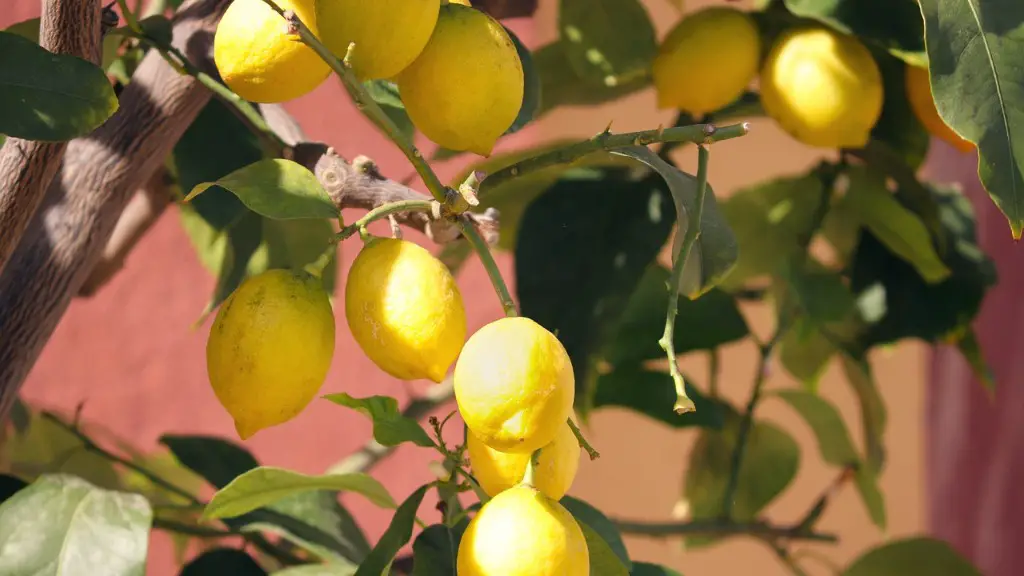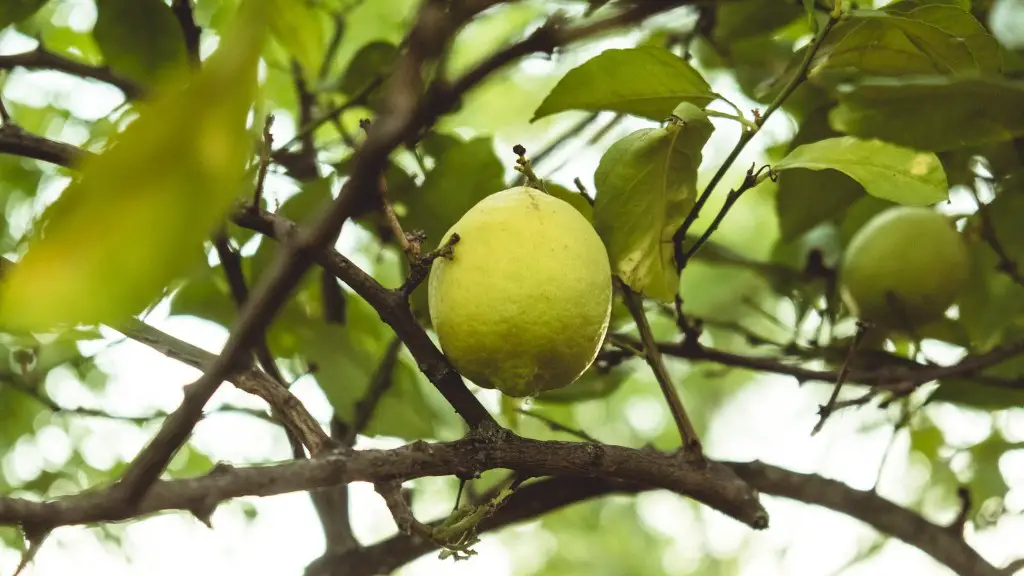Most people consider growing a lemon tree an intimidating prospect, however, it is a straightforward and simple process if you know how to do it. You don’t need a lot of resources to raise a lemon tree, as opposed to some other fruit trees. This article will discuss the necessary steps to successfully cultivate a lemon tree.
The first step to raising a lemon tree is to obtain a suitable lemon seed. One can purchase them from nurseries or supermarkets, or if you have access to a lemon, you can choose to get the seed from that lemon. However, not all seeds will germinate and become lemon trees, so it’s important to buy quality seeds.
Once you have your seed, you will need to choose a suitable pot in which to grow it. Pots can be something as simple as a plastic container, or something more elegant, such as a ceramic or terracotta planter. The main criteria to consider are the size of the pot and the amount of light that it allows to get through. It’s also important to make sure the pot has enough drainage holes.
When the pot is ready, it’s time to start planting. Start by filling the pot with a suitable soil mix and then place the seed about 1-2 inches deep. Try not to overwater your new plant and keep the soil moist but not soaked. Place the pot in a sunny spot and keep the temperature between 68-77 degrees
Once your plant starts to grow, it is important to ensure that it receives the right nutrients. Feed the plant every couple of months with a slow release citrus fertilizer. In order to produce fruit, you will need to purchase a ’marker’, which is an immature lemon branch. This will provide the necessary pollination and help your lemon tree to yield full-grown lemons.
Finally, to ensure your lemon tree’s health and productivity, it is important to check it for any pests or diseases. Keep an eye out for yellowing of leaves, white spots, and sticky residues, which can indicate a pest or disease outbreak. If you notice anything, contact your local nursery or arborist for further advice.
Germination
Once the seed is obtained, the next step is to get the seed to germinate. To do this, it is best to place the seed in a warm, moist environment. One way to do this is to place the seed in a damp sponge and place it in a warm spot. The seed should start to sprout in about 1-4 weeks.
Once the seed has sprouted, it is important to transfer it to a container with soil. The container should be larger than the seed itself, so that it can accommodate the roots and give the seedling room to grow. The soil should be nutrient-rich, light and well-draining, and should be kept moist but not soggy.
The seedling should be kept in indirect sunlight for the first few days, and then slowly exposed to more sunlight as it develops. Make sure to keep the seedling hydrated, and keep an eye out for pests or diseases.
Once the seedling has grown to a height of around 6 inches, it is time to transplant it to a permanent container. Make sure to choose a container which is big enough and that is light enough to allow lots of sunlight to get through. The soil should also be well aerated and nutrient-rich.
Once the plant is transferred, it is important to keep the soil moist and well-aerated. Depending on the species, the lemon tree should start to yield lemons in 3-4 years.
Watering & Irrigation
Citrus trees require a lot of water in order for them to grow and develop, about 2-4 inches deep each week. Make sure to water the tree deeply and regularly, as this will encourage the root system to grow further. Watering in the morning is usually the preferred time as this allows the leaves to dry off before evening. Overwatering the tree can lead to diseases and root rot, so make sure to only water when the soil is dry to the touch.
It is important to keep the soil well-aerated, as this will ensure the roots get access to enough oxygen. This can be achieved by adding organic matter to the soil, such as leaf compost or well-rotted manure.
It is also important to make sure the tree has access to enough nutrients. Citrus trees need a lot of nitrogen, which can be provided through a slow-release fertilizer. This should be applied every 6-8 weeks in the spring/summer and every 3-4 months in the fall/winter.
It is important to note that citrus trees are not particularly drought-tolerant and thus require regular watering. However, if the tree is exposed to temperatures that drop below freezing, it should be kept well-watered, as this will insulate the roots and protect the tree from damage.
Fertilizing & Pruning
Citrus trees need to be fertilized regularly in order to produce a good yield of fruits. A slow-release fertilizer should be applied every 6-8 weeks in the spring and summer, and every 3-4 months in the fall and winter. Make sure to follow the instructions on the fertilizer package to ensure you are using the correct amount.
It is also important to prune the tree regularly. This will help the tree maintain its shape and size, and encourage new growth. The best time to prune a citrus tree is in the spring, after the last frost has passed. Make sure to remove any dead or diseased branches, as well as any branch that is growing in an undesirable direction.
It is also important to thin out the branches so that light is able to get through. Thin out any area that is overcrowded, and make sure to not cut off more than 25% of the total canopy. Be aware that excess pruning can lead to weaker branches and can affect the fruit production.
It is also important to make sure that the tree is not getting too tall, as this can make it more susceptible to falling branches and winds. Trim off any branches that are overgrowing to keep the size of the tree under control.
Pollination & Harvesting
For citrus trees to produce fruits, they need to be pollinated. This is why it is important to purchase a ’marker’ or immature branch from a mature lemon tree. The branch should be no more than 1-2 feet long and should have a few young leaves. Place this branch inside the pot, and it will provide the necessary pollination for the tree.
Once the fruits have developed, they should be harvested when they are yellow-green and ripe. Fruits that are ripe will pull off of the tree easily, while unripe fruits will have to be cut off. To ensure the best quality fruits, it is important to pick them once they are ripe, as overripe fruits tend to be sour.
It is also important to make sure not to let the fruits hang on the tree for too long. Citrus fruits are susceptible to pests and diseases when left for too long, so make sure to harvest the fruits as soon as they are ripe.
Once harvested, it is important to store them in a cool and dry place. Citrus fruits last for up to a few weeks at room temperature, and up to a couple of months when stored in the refrigerator.
Pest & Disease Control
Citrus trees are susceptible to a variety of pests and diseases. It is important to be aware of the signs of these, including yellowing of leaves, white spots, and sticky residues. If you notice any of these, contact your local nursery or arborist for further advice.
In order to prevent pests and diseases, it is important to keep the tree well-maintained. This includes regular pruning, watering, and fertilizing, as well as keeping the tree free of pests and diseases. Avoid using chemical pesticides, as these can be very harmful to the tree and to humans.
It is also important to make sure the tree is not overwatered or underwatered. Overwatering or underwatering can lead to root rot or disease outbreaks. It is best to water the tree deeply, but not too frequently.
Citrus trees should also be planted in a sunny spot. This will help the tree to absorb more sunlight and be more productive. Make sure to also provide a structure for the tree to climb on, as this will make it easier for you to harvest the fruits.



